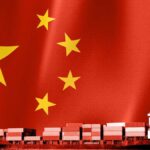In a significant escalation of tensions between the United States and China, the Chinese government has introduced new port fees specifically targeting vessels that are built, flagged, owned, or operated by the US. This move aligns with China’s ongoing strategic responses to US policies, including an antitrust investigation into Qualcomm, a major American technology firm. The investigation further underscores the deteriorating economic relationship between the two countries.
The newly imposed port fees come on the heels of similar measures set to take effect in the US later this month, demonstrating a reciprocal approach to economic pressure. As both nations grapple with complex trade dynamics, these developments are indicative of an increasingly confrontational stance within international relations.
He Weiwen, a former US-based diplomat and a senior fellow at the Centre for China and Globalisation, remarked on the implications of these actions. He noted that US President Donald Trump expressed frustration over the renewed tensions, especially given his prior claims of having successfully addressed the rare earth minerals issue in past negotiations with China. The ongoing confrontations seem to have left the president with limited options, which might explain his renewed threats to increase tariffs as a means of exerting pressure on China.
The situation continues to evolve, with both countries entrenched in a cycle of retaliatory measures. The implications of these new tariffs and investigations extend beyond the immediate economic fallout, potentially impacting global supply chains and trade agreements. As both nations navigate this complicated landscape, the possibility of resolution appears increasingly distant, continuing a trend of mutual suspicion and economic restraint.







